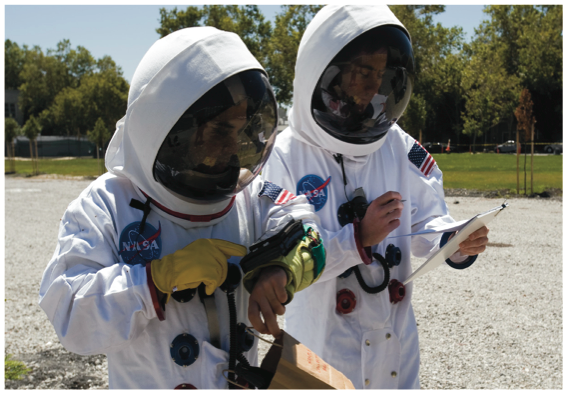Solution
Returning to the design guidelines
To further gauge the success of our project, we can evaluate our final design against the design guidelines we established in the beginning of the design phase.
See the Final Demo

Delta between Plan and Execution
Many features satisfied this guideline, including the Marcus-Bains Notch, Mission Time Left, and Station Time Left. The advantages of having this redundancy was two-fold: users were always aware of whether they were early or behind schedule and used the appropriate feature depending on discrep- ancy between the schedule and execution.
Timeline Optimized For Execution
Compared to OSTPV‘s bird’s eye view of the plan, our design is much easier for an astronaut to digest because it contains only the most relevant information. A cuff-mounted paper checklist achieves the same goal, but is static and not able to accommodate dynamic plan changes. With the help of the Equipment List, no participant from the final ORT spent time returning to the space exploration vehicle to fetch forgotten equipment, as those from previous iterations often did. The ease of browsing and looking ahead during egress and ingress allowed participants to rehearse prior to arriving at the station. Participants from the final ORT not only finished all of the scheduled activities correctly, but also were able to complete many of the backup activities.
Autonomy When Appropriate
We witnessed ORT participants make real-time changes to the plan throughout testing. Those running late maintained situational awareness of the plan and knew when to return to basecamp. Those ahead of schedule were able to view backup activities and make real-time decisions about what could be accomplished. Participant 2 from the Final Iteration even performed activities out of order.bWe observed participants give higher precedence to activities with a higher priority. For example, user 2 from the second ORT left a station early after completing the priority activities there because he was running late. Our geologist contact from Desert also confirmed the observed user need for the priority feature.
Glanceable and Unobtrusive
Station Time Left was the most successful feature in terms of glanceability. A quick glance at its color told the ORT participants about whether they’re ahead or behind. The large text used in the Activity List, often in short hand, made it not only easy for expert users to rehearse during egress, but also provided quick “cues” when participants forget. Our Desert RATS geologist compared it to the shorthand style used during the Apollo EVAs.


